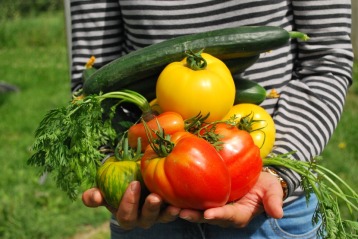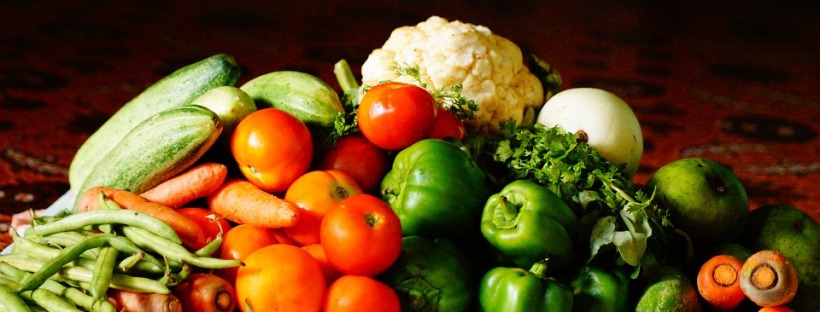When it comes to eating healthy, we all know we should be eating more fruits and vegetables. Full of vitamins and minerals, the produce section of your grocery store is a great place to jumpstart the healthy eating habit. Yet when you fill your cart with this colorful bounty, the costs add up.
Earlier this year, while on a health kick, I loaded up my cart with tons of fruits and vegetables, ingredients for a weekly menu of healthy soups and smoothies. I thought I’d be saving tons of money by avoiding convenience foods and doing the cooking myself. Right? Wrong. My bill was nearly $100, and that’s for one person, one week. I remember cringing at the total and thinking there had to be another way (or a mistake on my receipt, which there was not).
According to the Harvard School of Public Health (which seems pretty legit, if you ask me), fruits and vegetables can have huge nutritional benefits. We’re talking reduced risk of cancer and heart disease, lowered blood pressure and improved gut health. But how can you get all of these benefits without breaking the bank? After all, it’s not too often that you find coupons for strawberries or carrots.
The answer is surprisingly simple.
Buy in Season
I can’t stress this enough. Just because we can buy nearly any fruit or vegetable at any time doesn’t mean we should. Yes, strawberries are delicious, and I’d love to enjoy fresh, colorful berries year-round. But why should I pay $5 a pint when the same product is usually $1-2 in the springtime?
There’s a simple pleasure in eating seasonal produce. The asparagus is crispier, the Brussels sprouts are less bitter, the peaches are sweeter. It adds a sort of joyous novelty to grocery shopping, and teaches us to associate certain flavors with the season. Our ancestors and early farmers didn’t eat whatever they wanted whenever they wanted. They ate what was available, and appreciated it that much more when it came along.
If you’re into the ‘farm to table’ movement, eating off season is not the way to go. The strawberries that grace your grocery store in November are grown elsewhere and shipped hundreds if not thousands of miles. Not only does this contribute to a larger carbon footprint, but let’s face it – it just doesn’t taste the same!
 If you buy in season, it will change your relationship with food. Why serve the same meals day after day to your family? A seasonal menu adds variety, different vitamins and minerals, and gives you the chance to experiment a little. When that first shipment of Honeycrisp apples comes in, it will taste so much sweeter.
If you buy in season, it will change your relationship with food. Why serve the same meals day after day to your family? A seasonal menu adds variety, different vitamins and minerals, and gives you the chance to experiment a little. When that first shipment of Honeycrisp apples comes in, it will taste so much sweeter.
If you have no idea what’s in season, don’t worry. There are plenty of resources online, including this great chart by the U.S. Department of Agriculture. In fact, if you click on one of the items listed, you’ll be whisked away to a page with recipes, nutrition facts, and more information on that particular food. Did you know that in the United States, our consumption of mushrooms has quadrupled since 1965? Who knew!
The above chart is a great starting point, but zeroing in on your local climate can help you make better choices. About.com has a helpful selection of State-Specific Seasonal Produce Guides.
So instead of mindlessly pushing your cart through the produce section, buying the same foods over and over again, consider buying in season (hint: usually the stuff that’s on sale). Not only will you save money, but you’ll help contribute to more sustainable farming practices and add more varied nutrition to your diet. It’s a win win!

I love your helpful information!
LikeLike
Thanks, Hank!
LikeLike